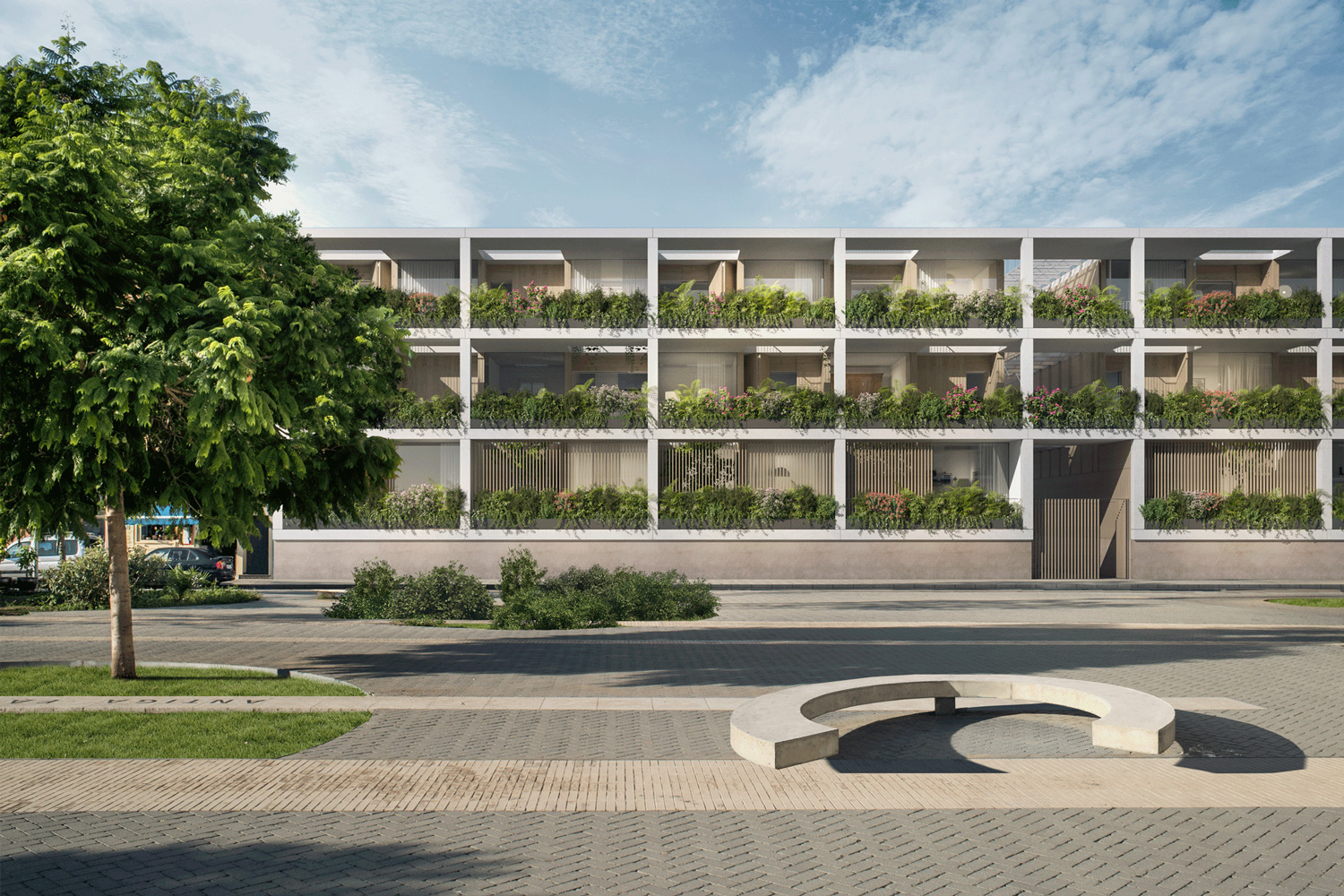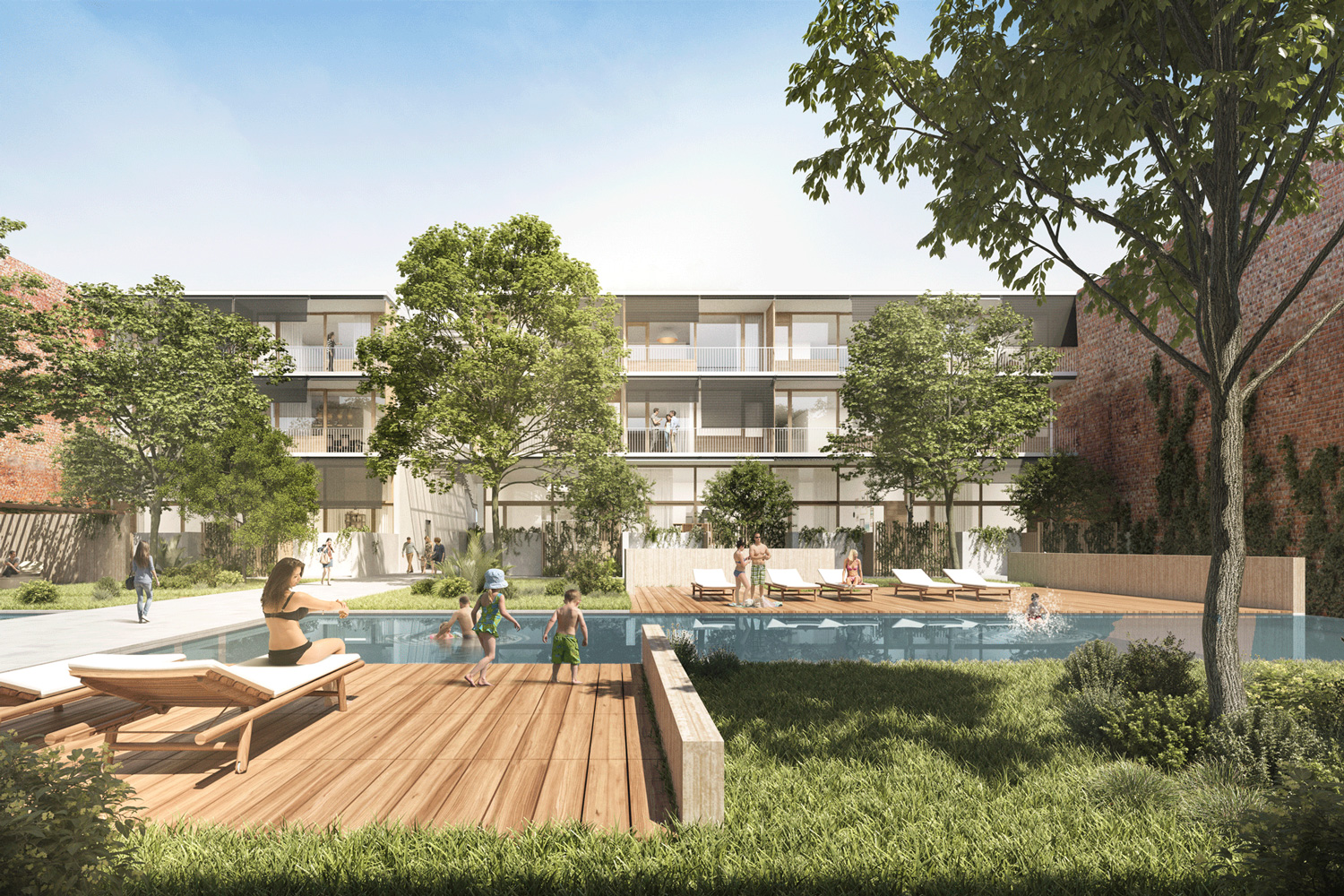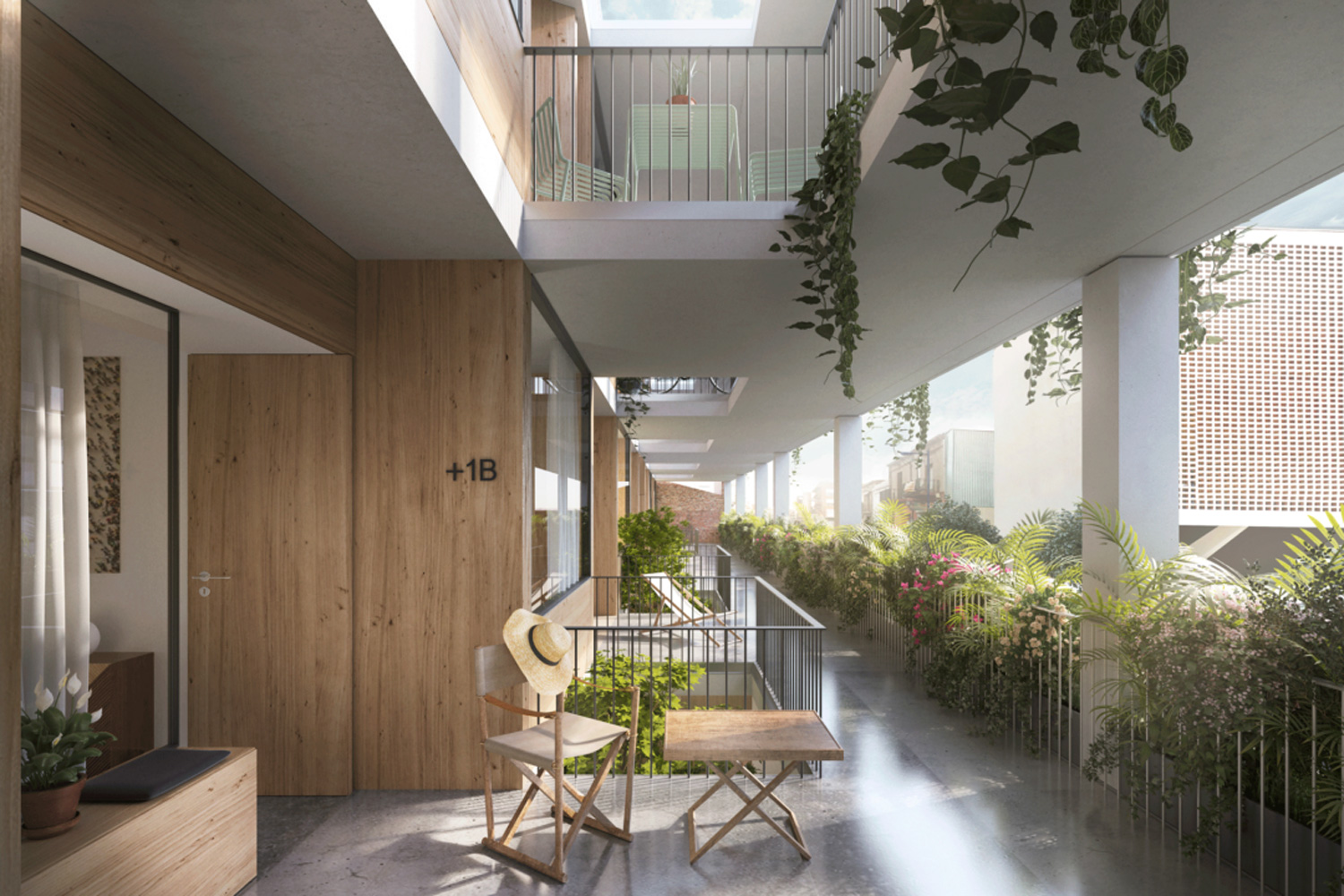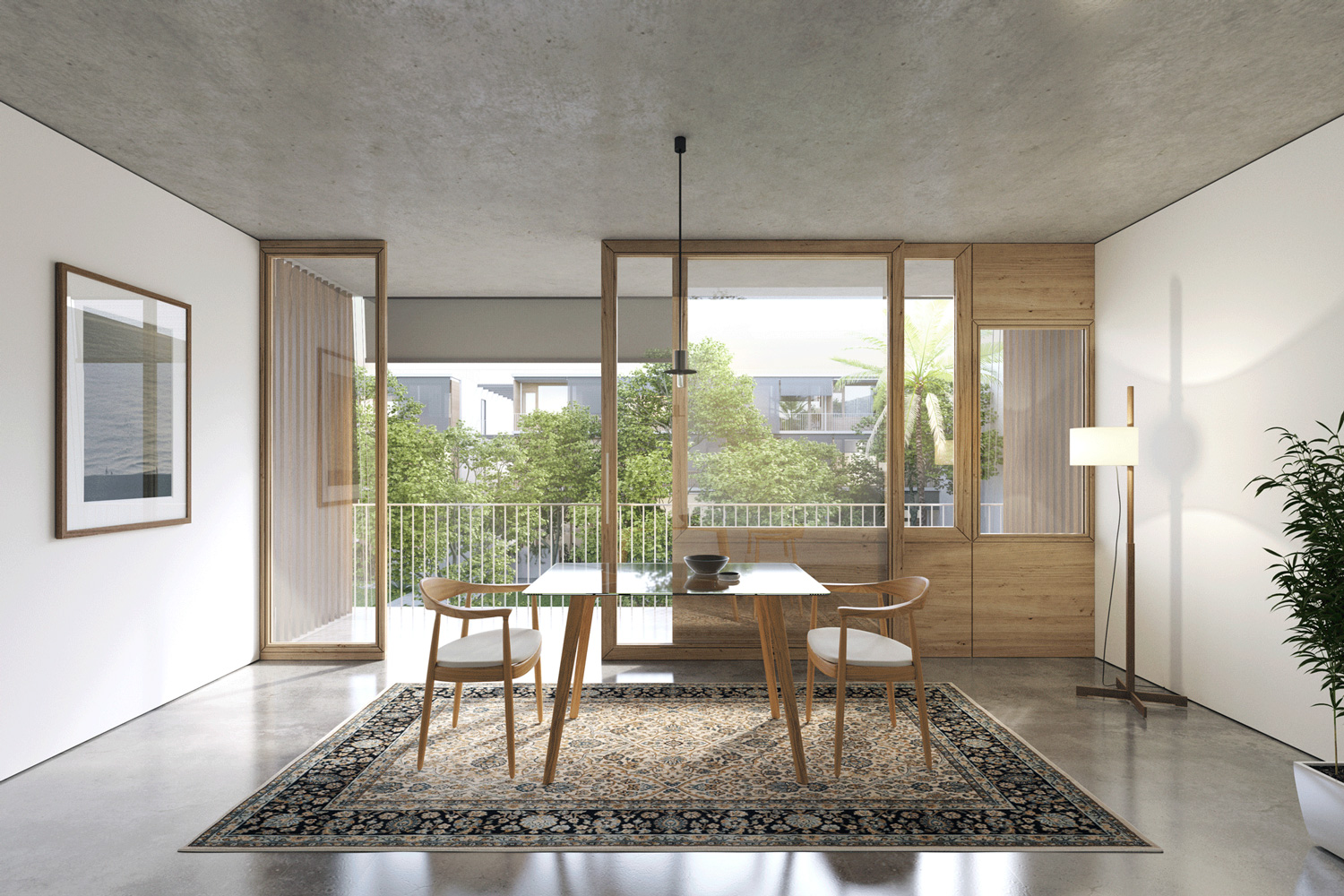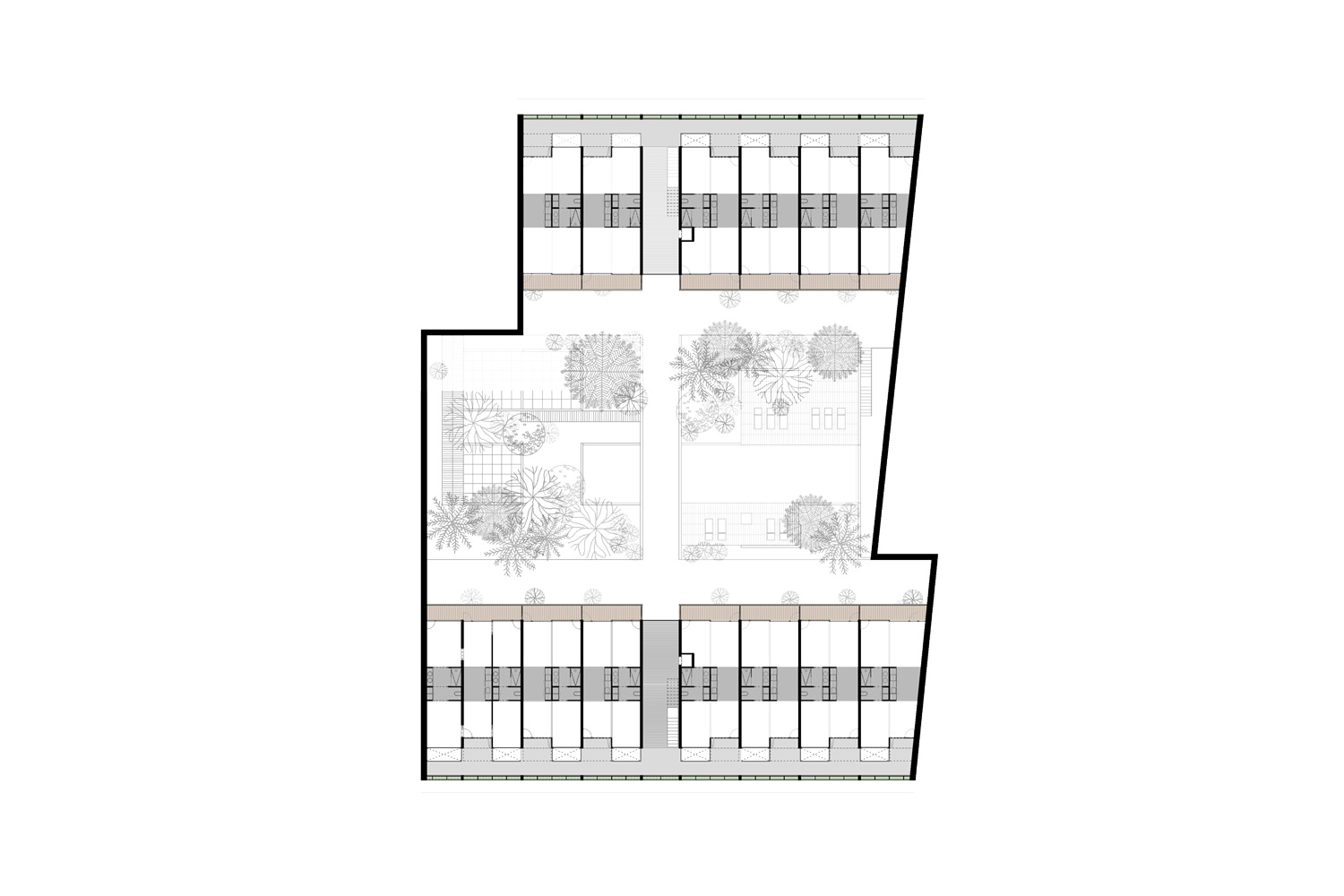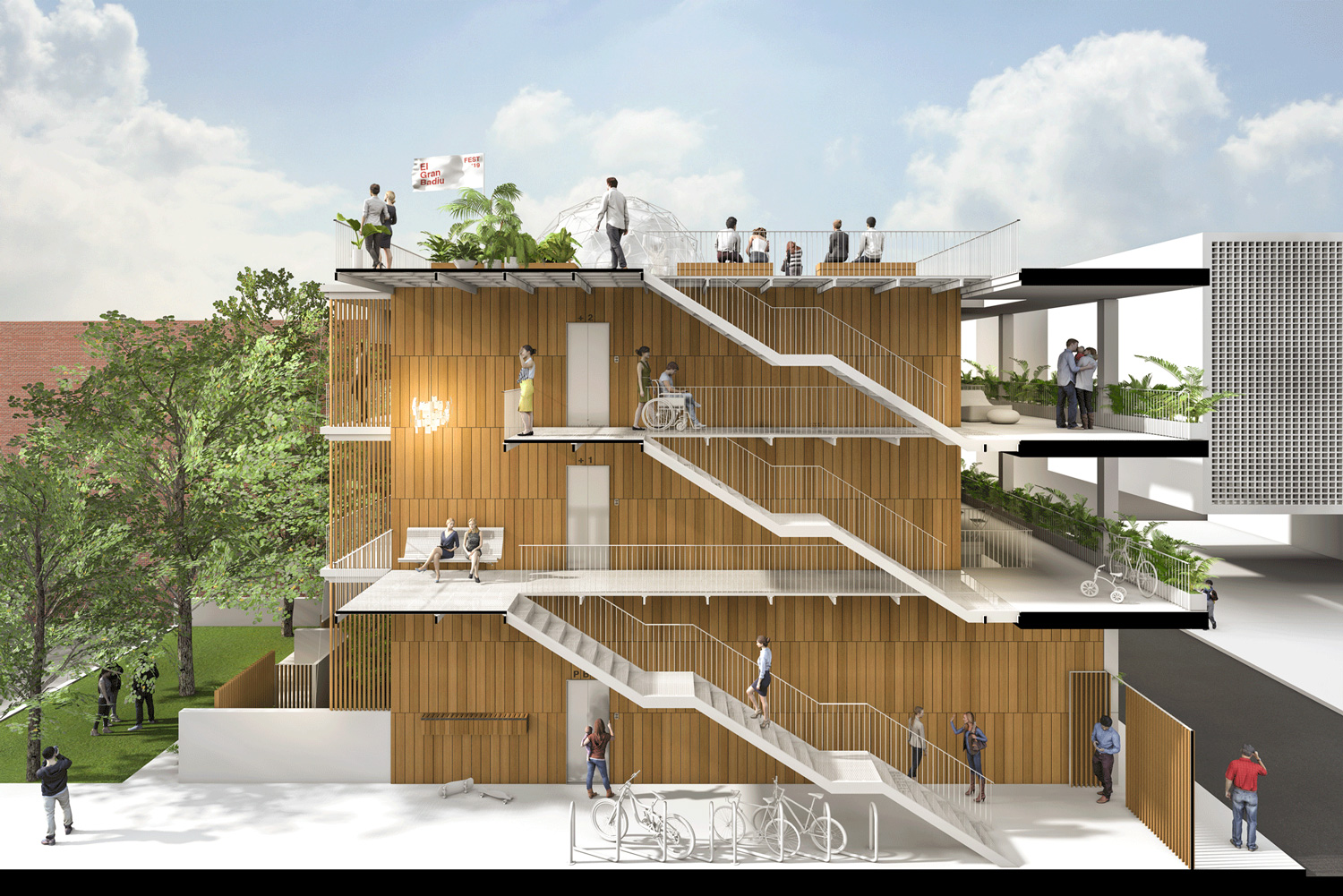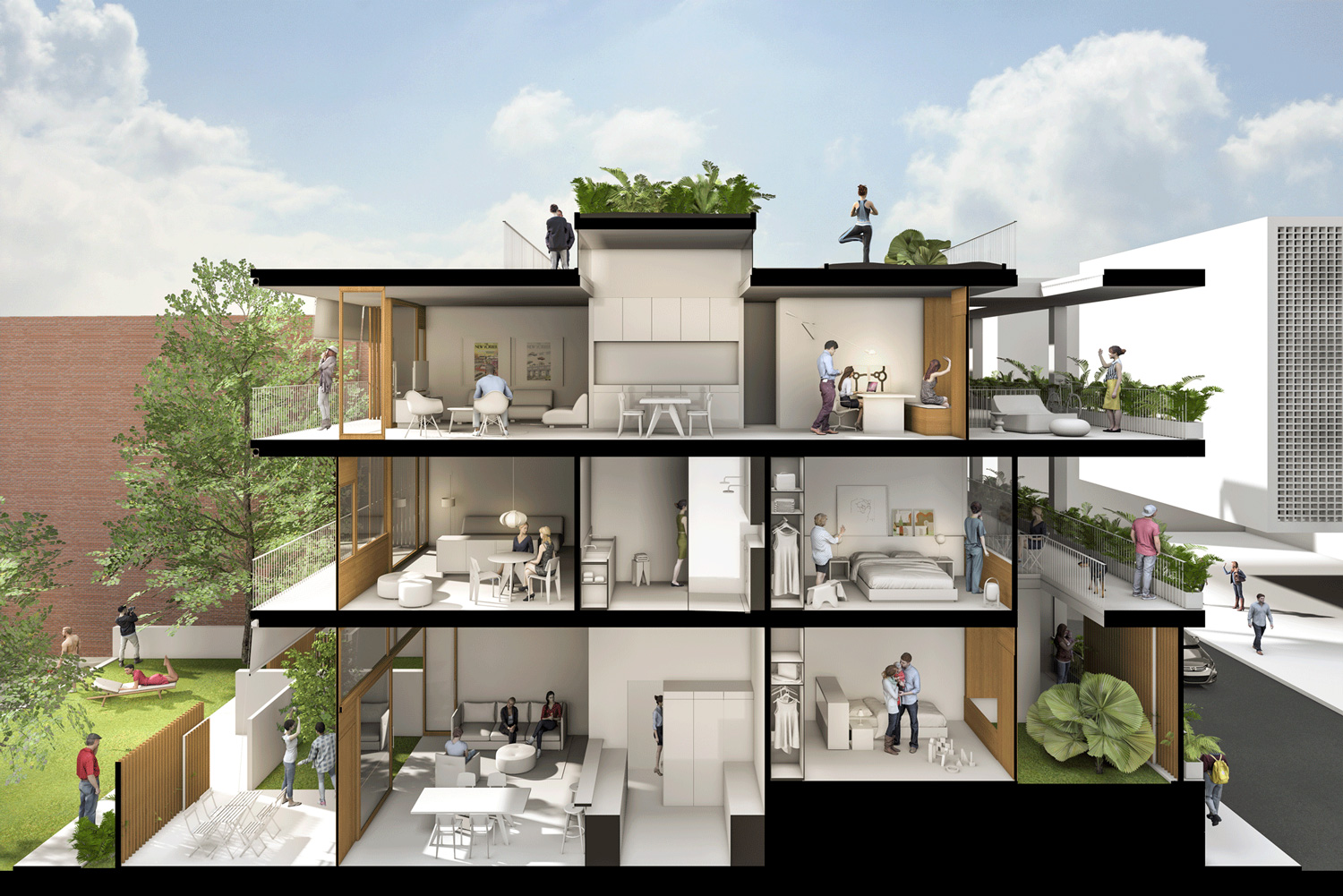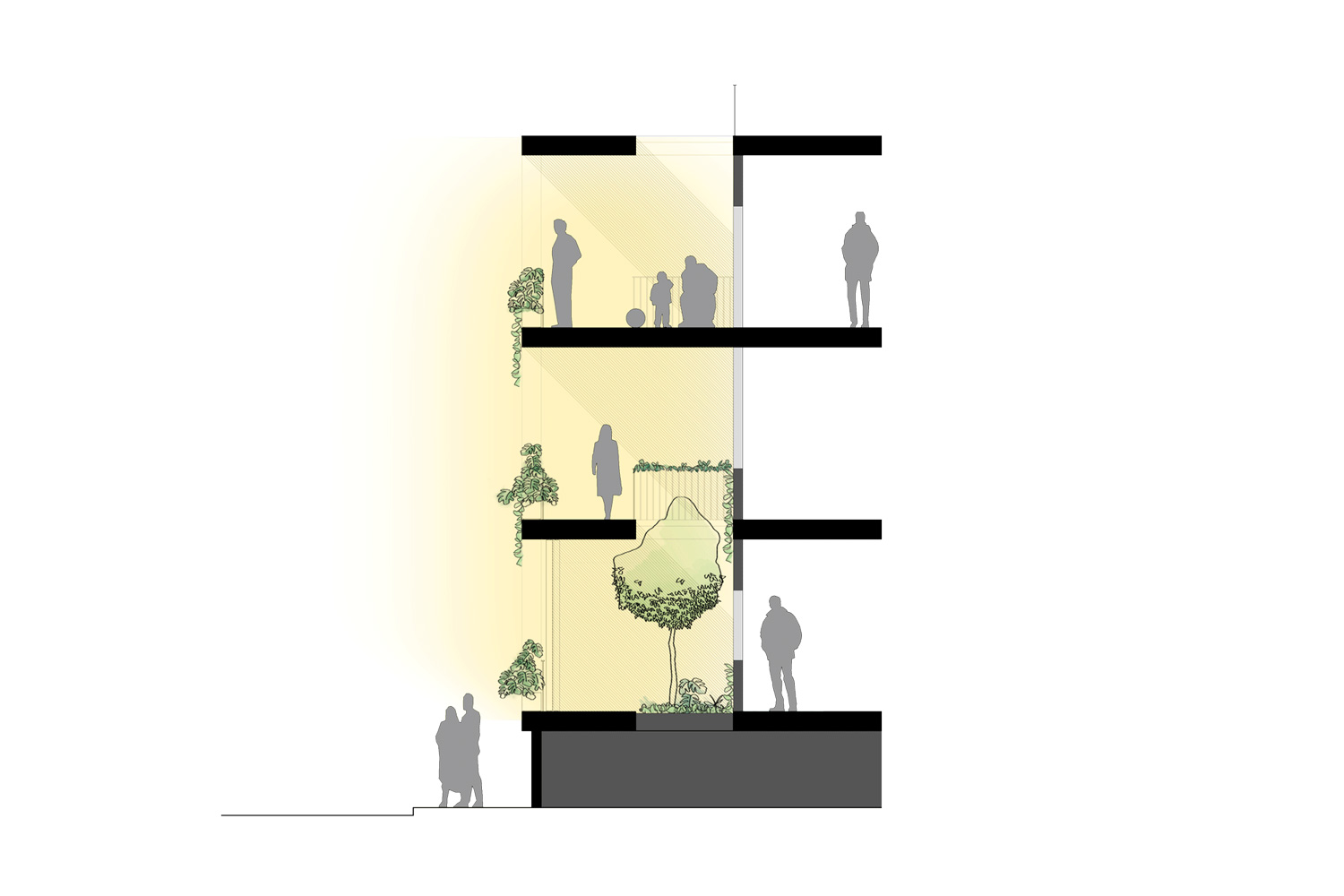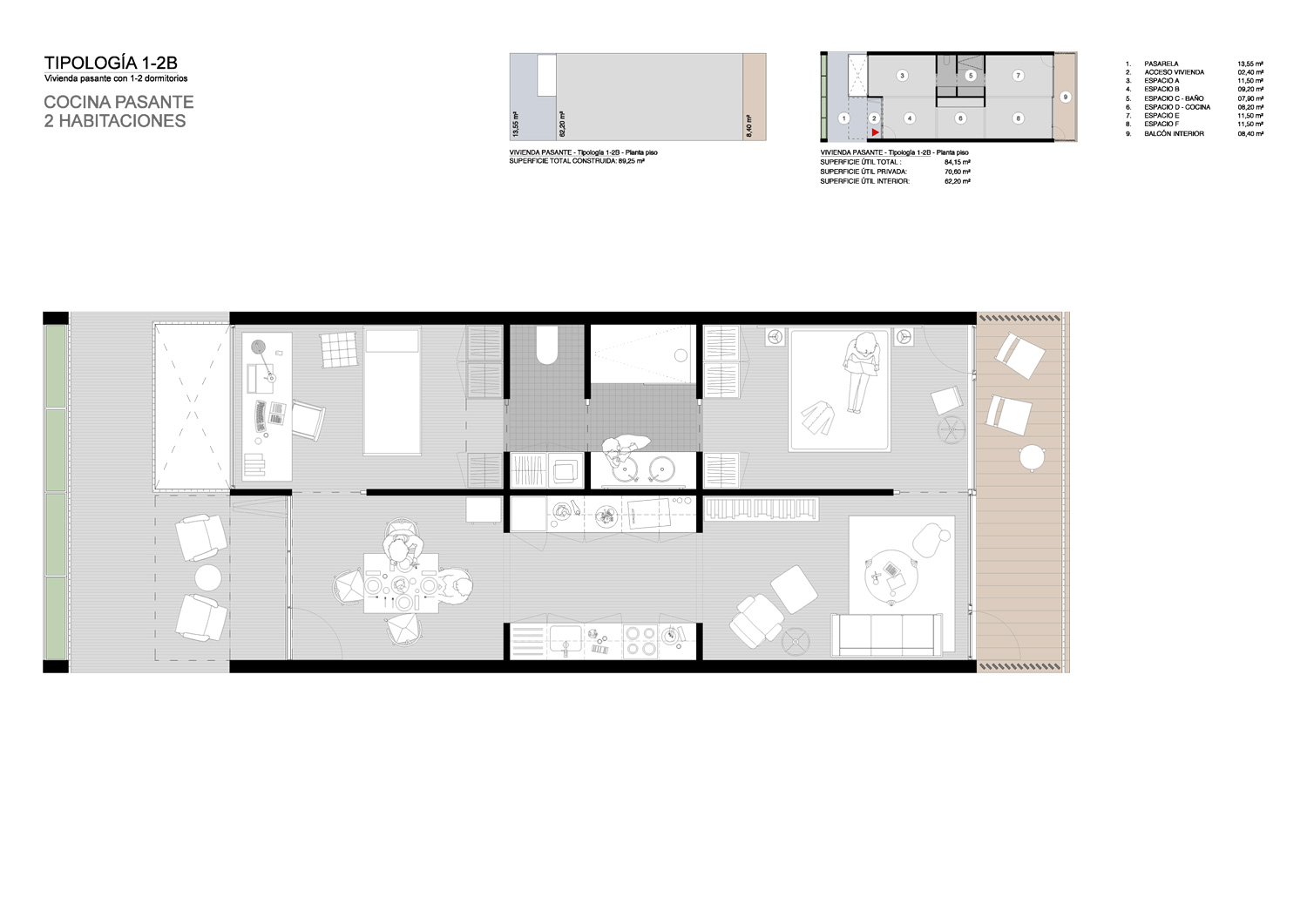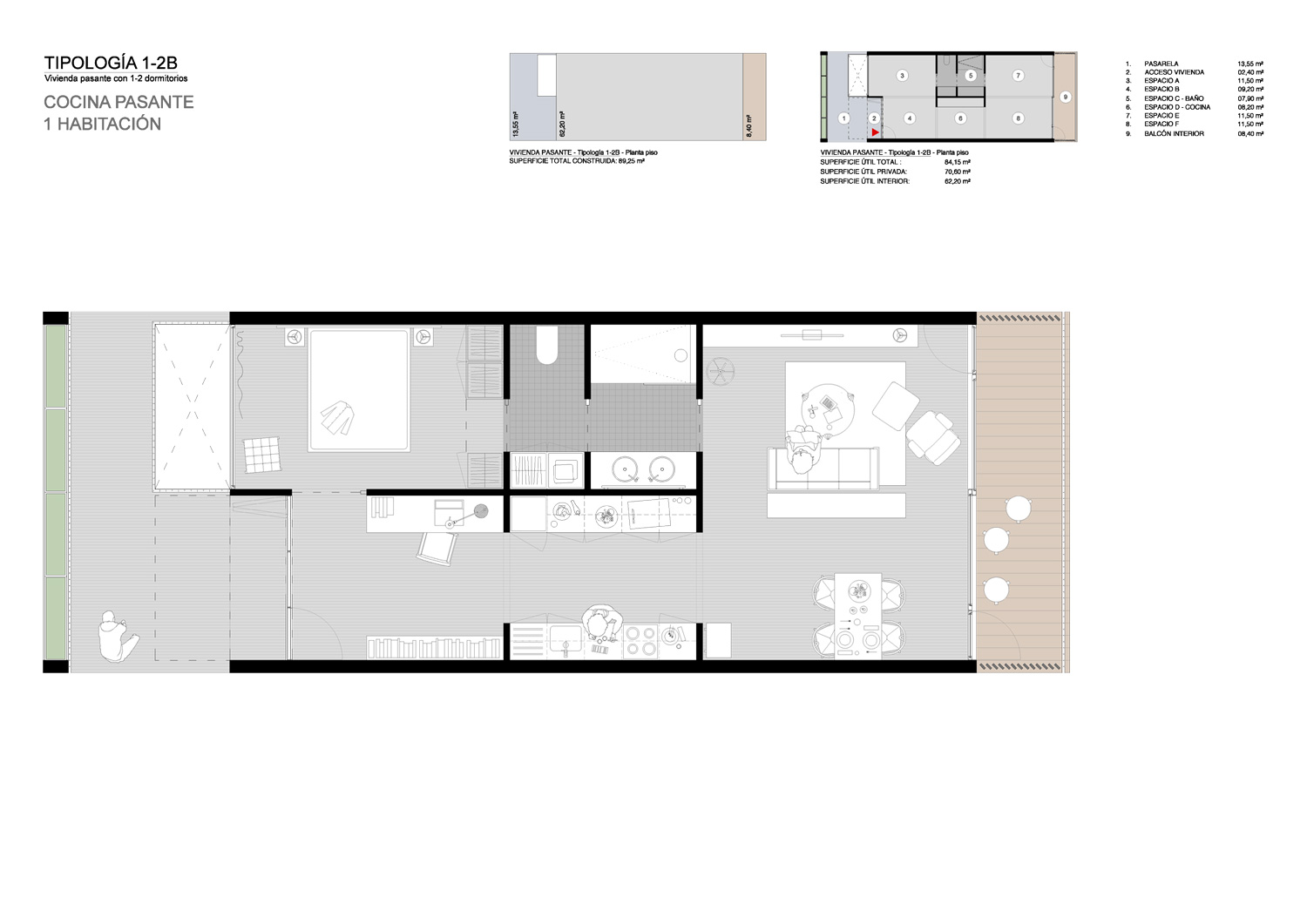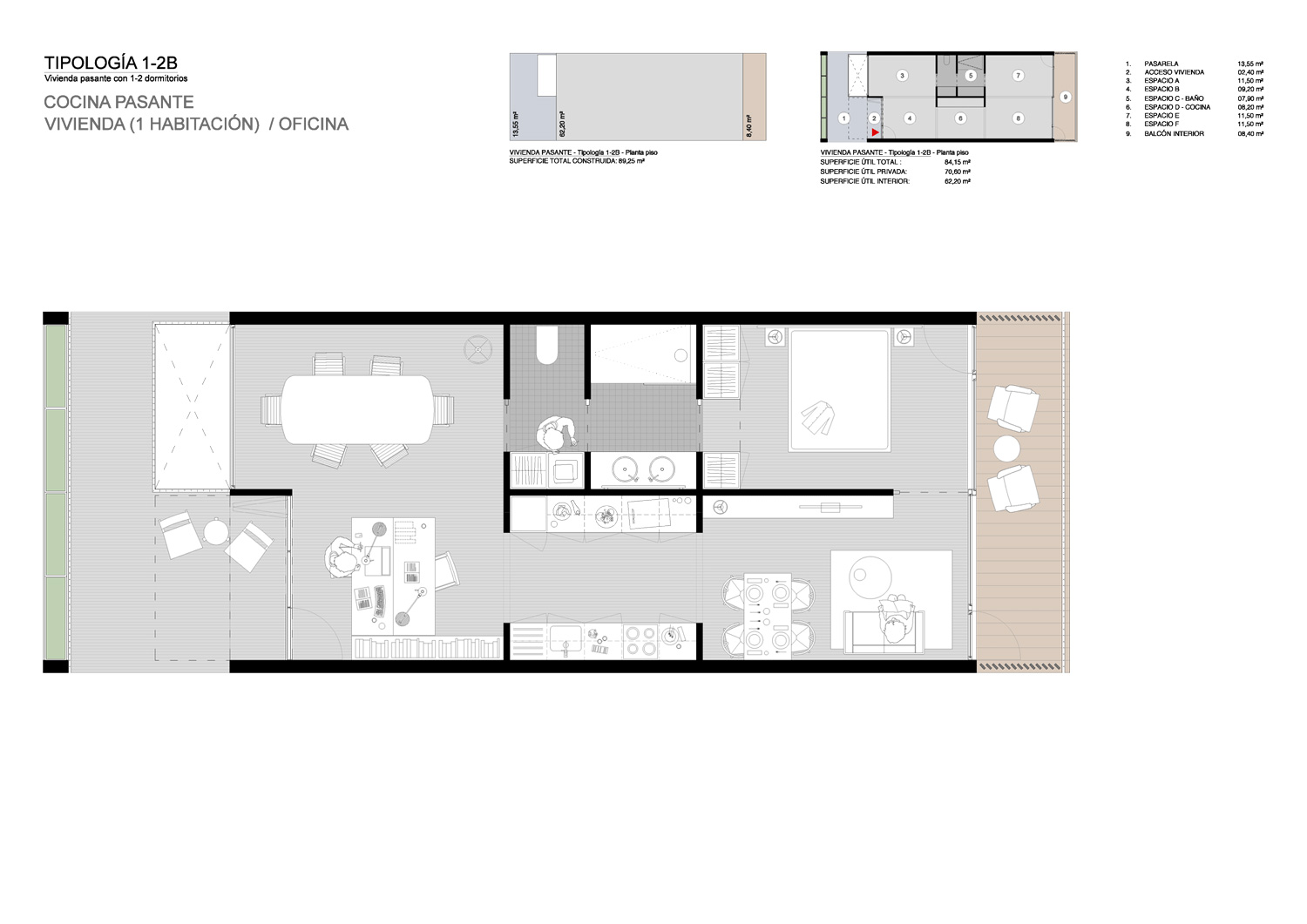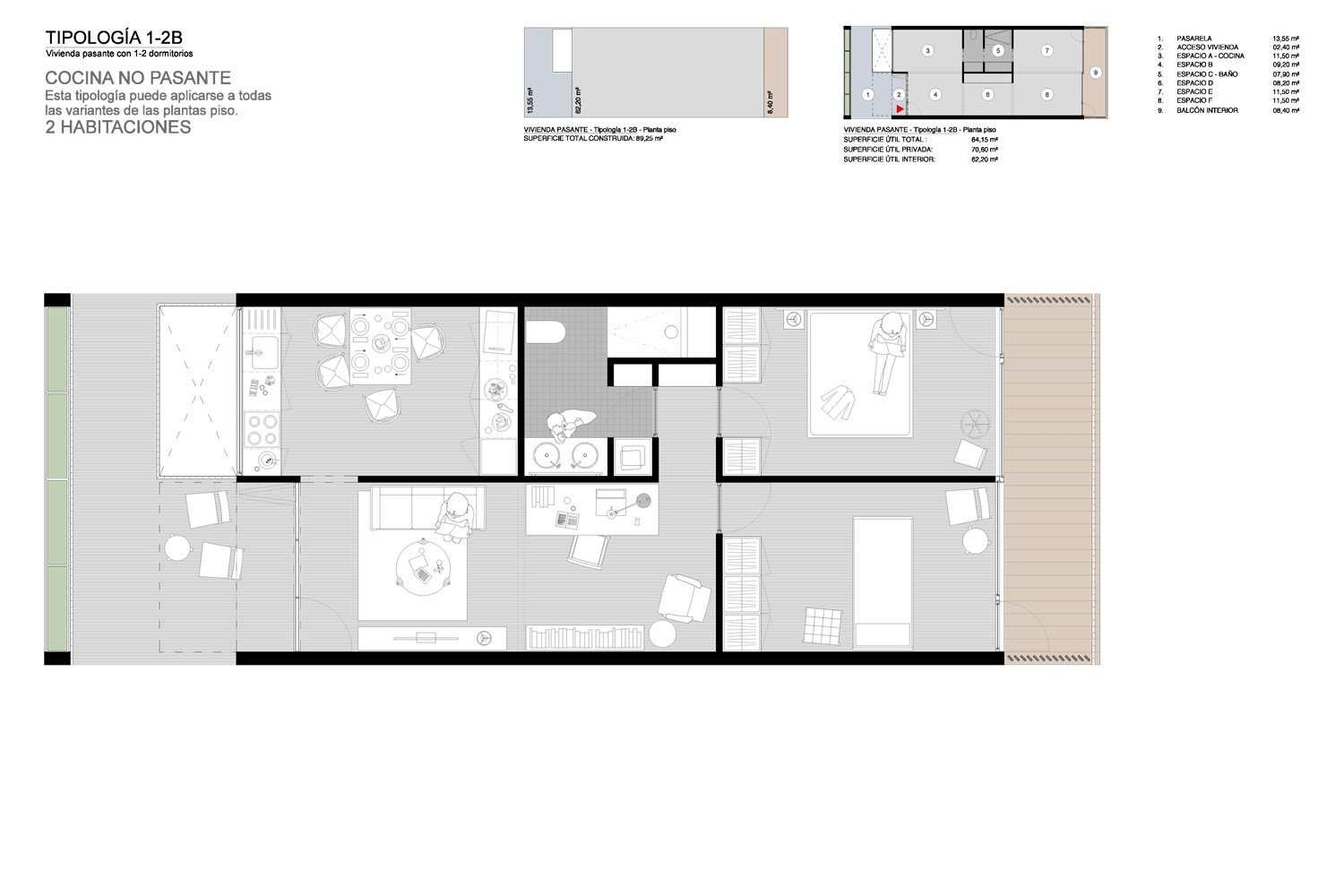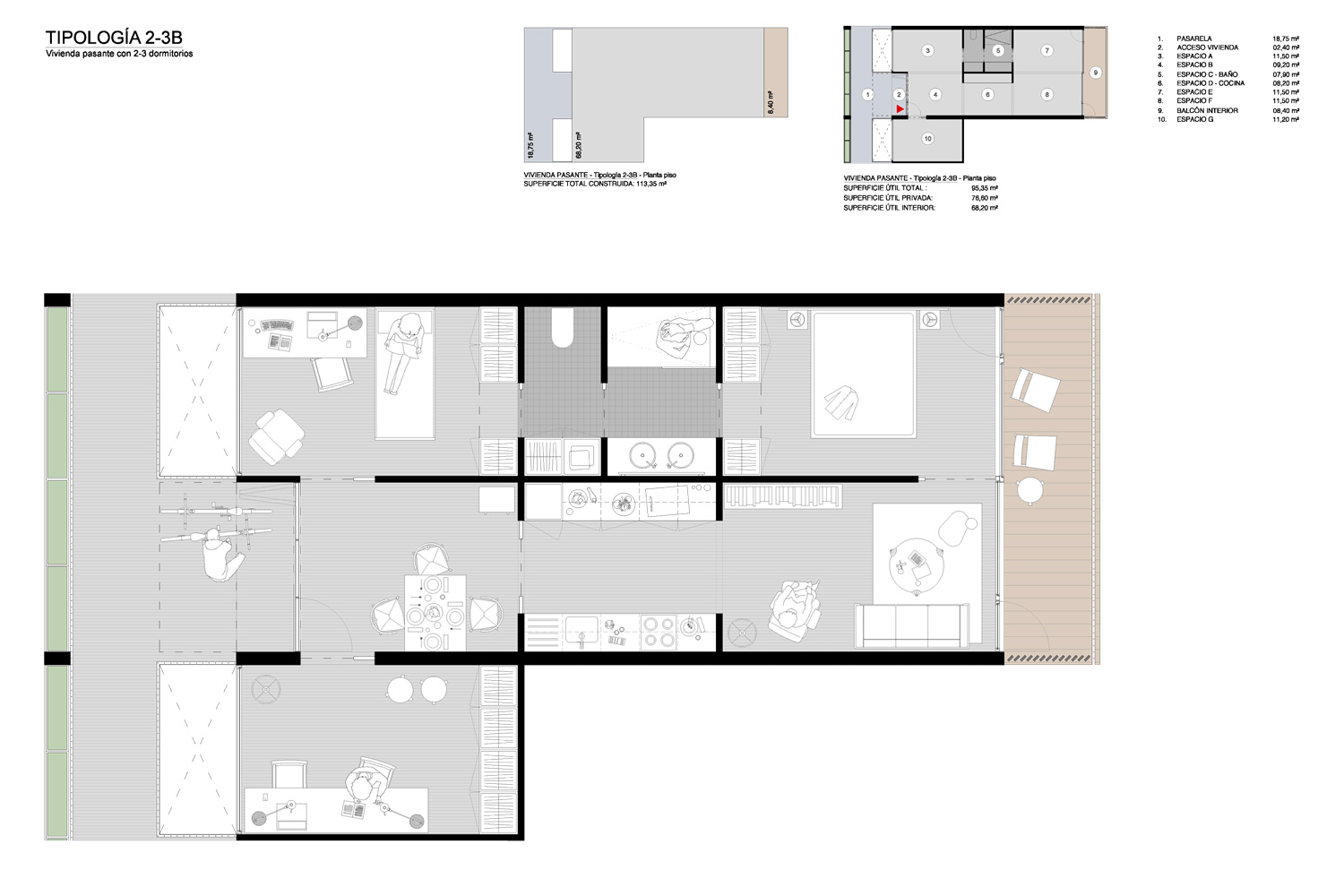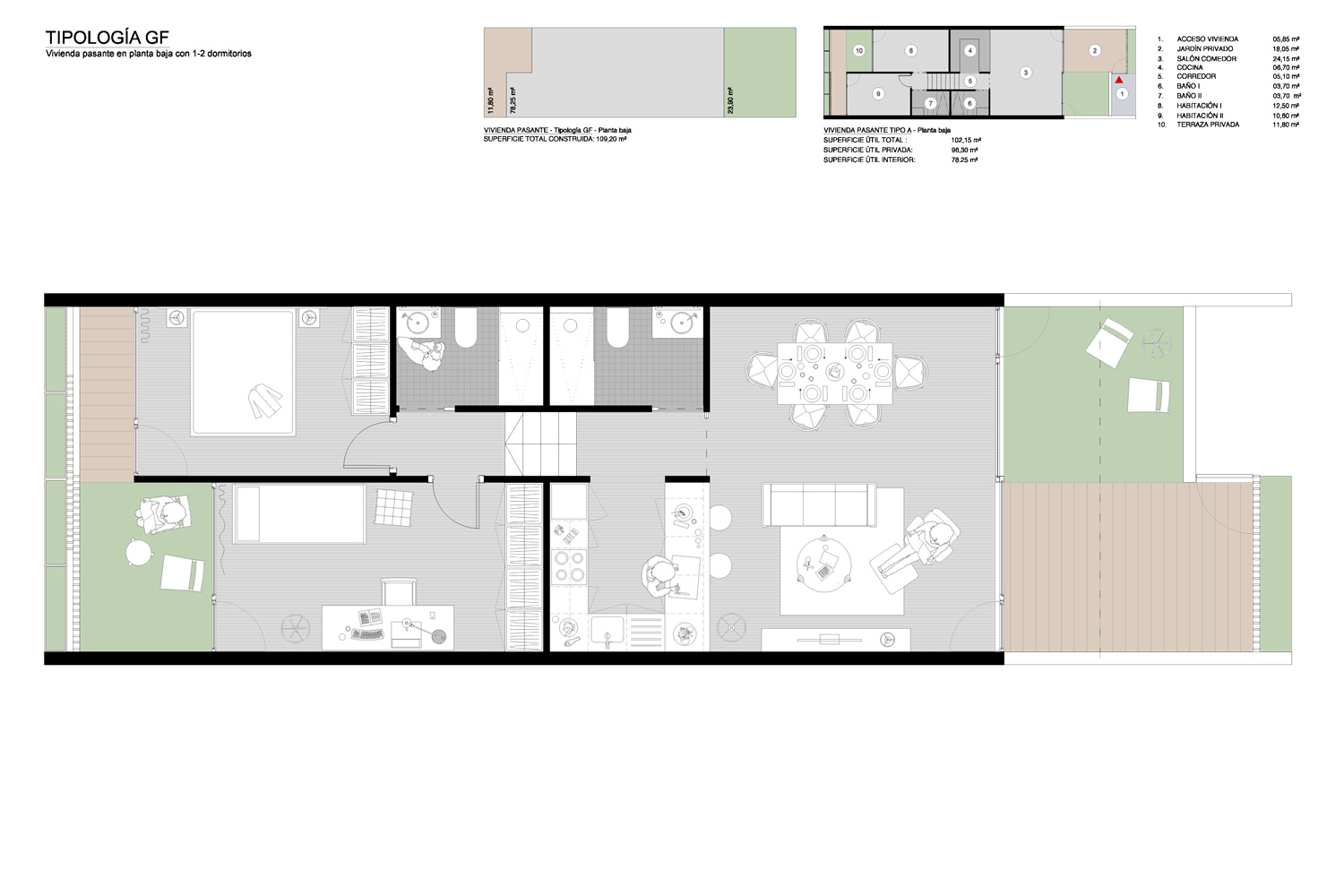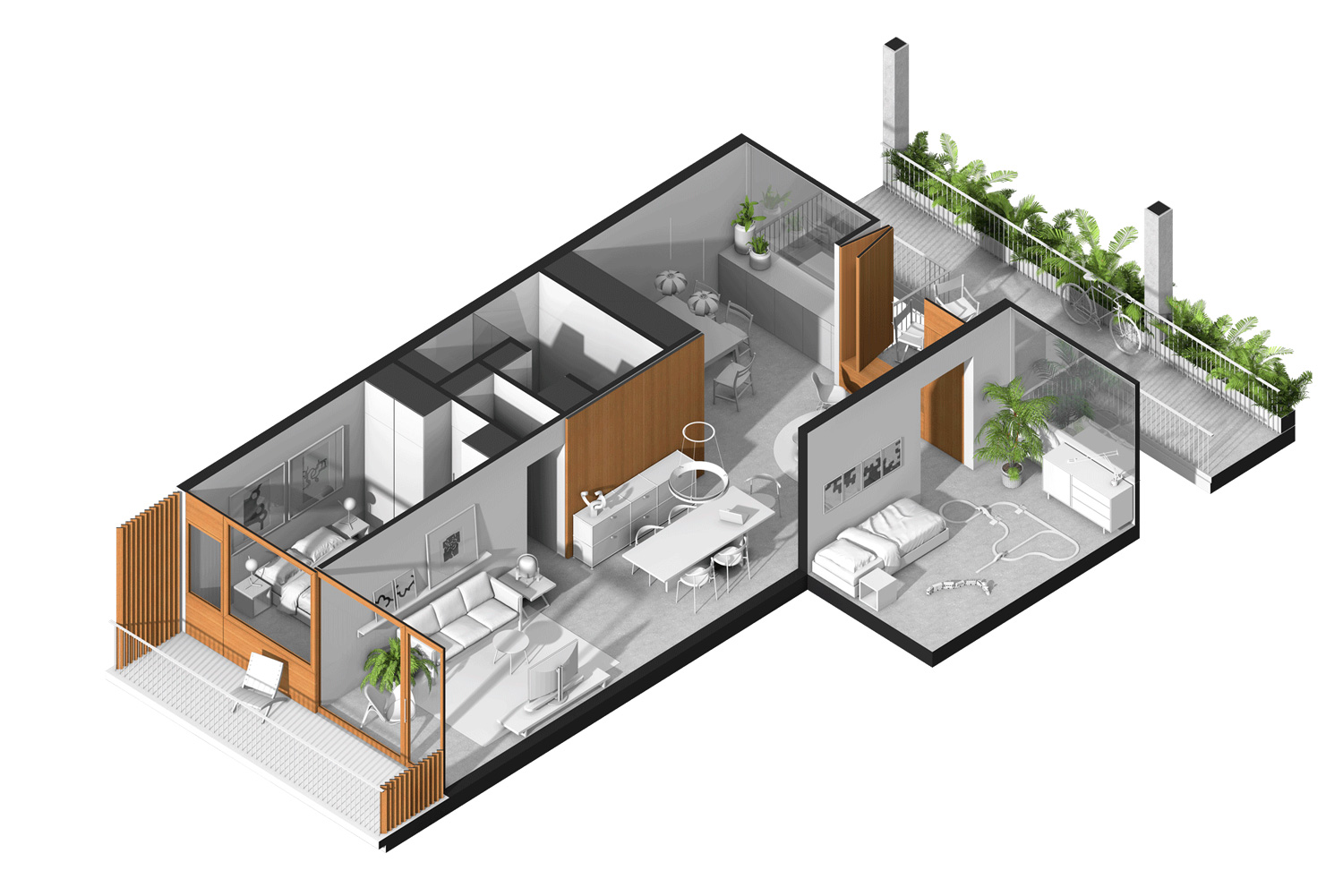☉ Un Gran Badiu is a finalist competition entry by Mesura and TOI T for Emesa in 2016. It is located in Badalona Spain in an urban setting. Its scale is medium. Key materials are concrete and wood. Play-Time collaborated as visualizer.
Located in Badalona, a small town north of Barcelona, the project consists of two three stories buildings offering a total of forty-two apartments. Both buildings share the same dual condition, a facade facing an active urban environment whilst another looking towards a luxuriant inner garden. The proposal responds to that duality in two ways, a generous shared circulation facing the streets and only double-oriented flats.
Both solutions respond to the idea that the project must act as a community, where interactions between neighbours are enabled by the building’s organisation. The idea was that Catalonia’s incredible Mediterranean ways of life could be physically implemented throughout the building, offering to the inhabitants not only a place to live, but spaces to encounter, discuss, work and exercise.
The shared circulation was designed not as a service corridor but as a generous semi private terrace. While creating a buffer zone, both bioclimatically and spatially, protecting the flats from the context’s interferences, the shared circulation also allows for the inhabitants to occupy its generous width for daily activities and social interactions. Importantly, and following a local tradition, this buffer zone expresses the building’s structural grid and works as a frame for vegetation to grow freely.
The apartment units were all conceived as double-oriented to make sure that every inhabitant had an equal view towards the green heart of the project, the inner Oasis. The double-orientation also provides direct sun light along the entire day and natural cross ventilation. The units themselves had to offer the maximum flexibility of use, allowing the inhabitants to transform their home according to their lives. The proposal argued that flexibility cannot be achieved if rooms are defined and constructed by their function, which would freeze them in place and time. Instead, the architects proposed that ambiguity might be the new flexibility, where rooms with no name and of equal size would let inhabitants adjust and use their homes to fit the needs of a single expatriate worker as much as a four-person family.
